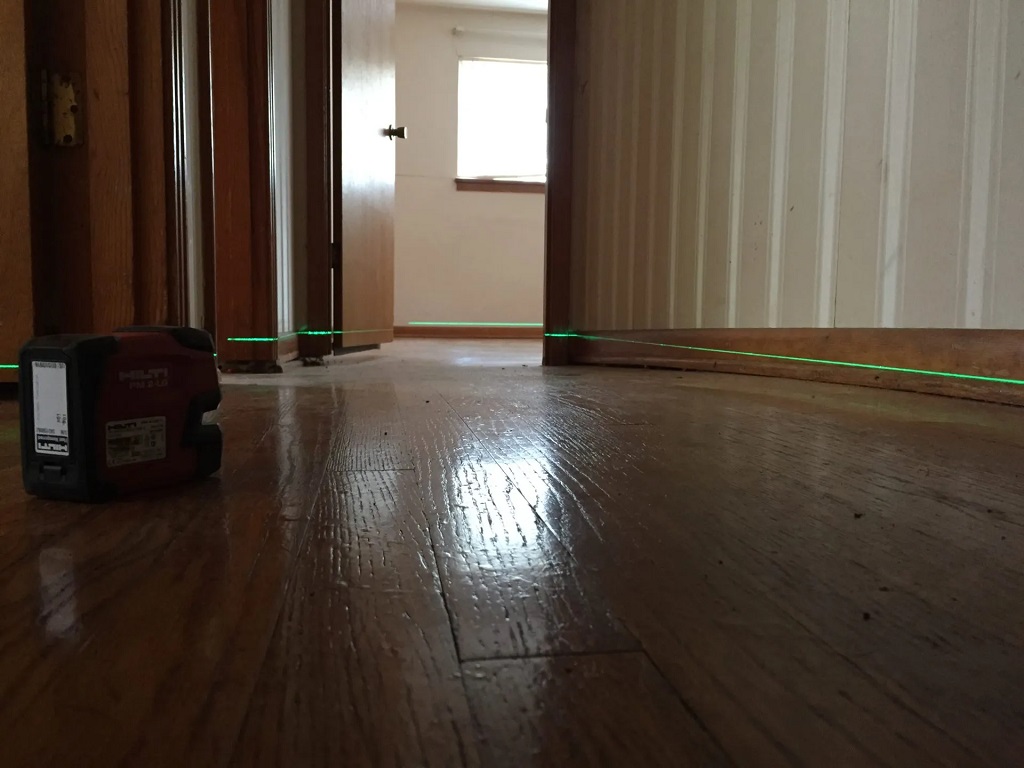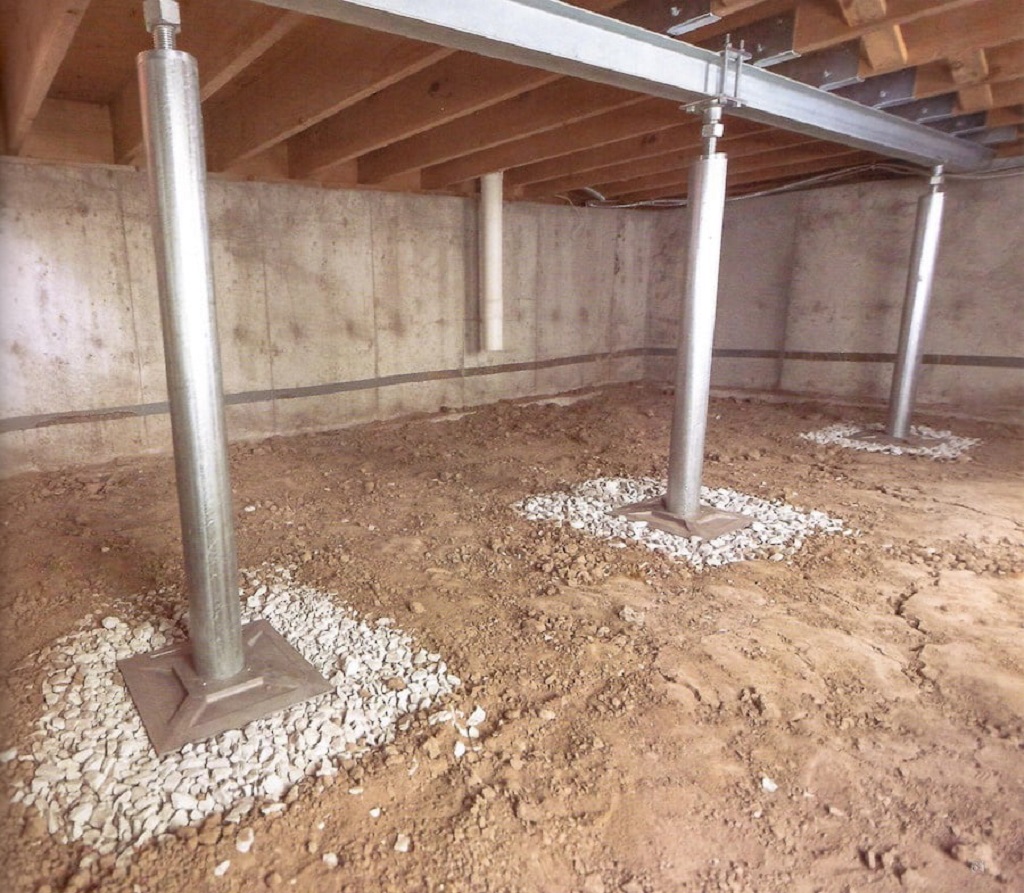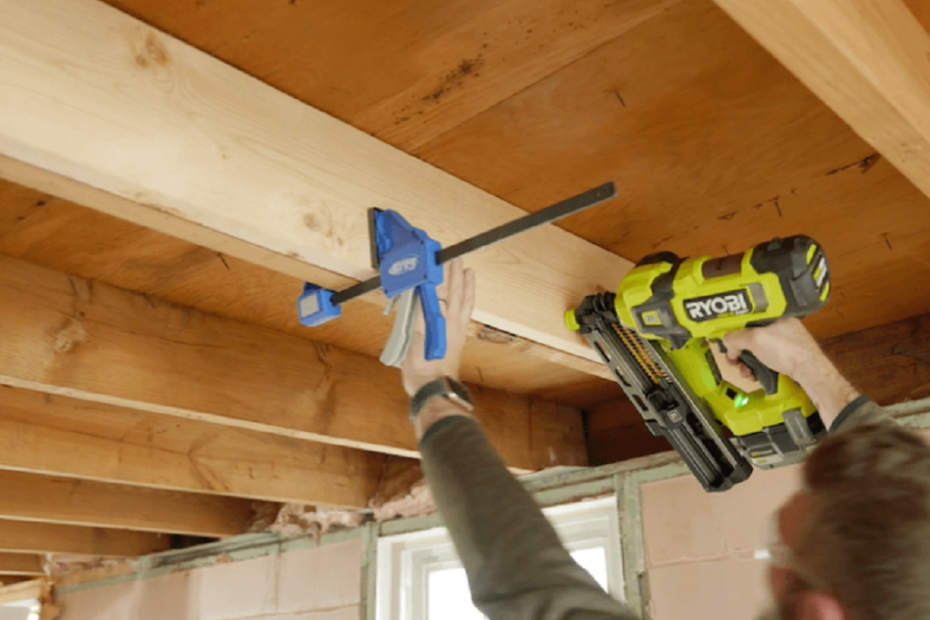To fix sagging floors in Austin, Texas, consider attaching “sister joists” to the original ones for minor deflection. However, for more significant problems with multiple sagging floor joists, it is recommended to seek professional repair assistance.
If you are dealing with sagging floors in your home, it is essential to address the issue promptly to prevent further damage. Sagging floors can be a result of weak joists or underlying structural problems. While minor deflection can be fixed by attaching sister joists, more significant issues may require professional repair.
We will discuss some clever fixes for sagging floors in Austin, Texas, ensuring your home’s stability and safety. So, let’s dive in and explore the best solutions for fixing sagging floors.
Causes Of Sagging Floors

Sagging floors are a common problem homeowners face, and various factors can cause them. Understanding the underlying causes of sagging floors is essential to finding an effective and clever fix. Let’s explore some of the main reasons why floors hang:
Natural Settling
One of the primary causes of sagging floors is natural settling. Over time, the ground beneath a house can shift and settle, leading to an uneven foundation. This settlement can result in sagging floors, as the house’s support structures may become compromised. It’s essential to address this issue promptly to prevent further damage. For homeowners encountering sagging floors due to natural settling, https://standfastcreative.com/ provides a valuable resource for understanding and tackling the problem. Their expertise can guide you through the steps necessary to stabilize your home’s foundation and rectify the sagging floors, ensuring the safety and longevity of your property.
Water Damage
Water damage is another common cause of sagging floors. Excessive moisture, whether due to leaks, flooding, or high humidity levels, can weaken the structural integrity of the floor joists and beams. The prolonged exposure to moisture can cause the wood to rot, warp, and deteriorate, leading to sagging and uneven floors.
It is essential to identify and repair the source of water damage to prevent further harm to your floors and the overall stability of your home.
Age Of The House
The age of the house can also contribute to sagging floors. Older homes may have been constructed using materials and techniques no longer considered structurally sound. Over time, the weight and constant use can cause the floor joists to weaken and sag.
Additionally, inadequate or outdated support systems may not bear the weight of modern furnishings and appliances, further exacerbating the problem of sagging floors.
If your house is older, it is essential to assess the condition of the floor structure and consult with professionals to determine the best course of action.
Identifying Sagging Floors
If you notice any of the following signs in your home, you might have sagging floors. It’s essential to identify these issues early on to prevent further damage and ensure the safety of your home.
Uneven Or Sloping Floors
One of the most apparent signs of sagging floors is uneven or sloping. You might notice that your furniture doesn’t sit straight or that objects roll to one side of the room. This can indicate that the structural integrity of your floors has been compromised.
Cracks In Walls Or Ceilings
Another telltale sign of sagging floors is the presence of cracks in your walls or ceilings. The walls and ceilings can shift as the floors sag, leading to visible cracks. These cracks can vary in size and severity, but they should not be ignored as they can indicate a more significant structural issue.
Visible Gaps Between Floor And Walls
It could be a sign of sagging if you notice visible gaps between your floors and walls. These gaps can occur as the floors begin to sink, causing separation between the floorboards and the walls. It’s essential to address this issue promptly to prevent further damage.
Diy Solutions For Sagging Floors
Sagging floors can be typical in many homes, especially in older houses or those with inadequate structural support. However, there are DIY solutions that homeowners can consider to address this problem. Whether it’s replacing subflooring, adding extra support, or using a floor leveler, there are several approaches to repairing sagging floors without professional help. By carefully assessing the extent of the sag and identifying the underlying cause, homeowners can effectively plan and execute a repair strategy. These DIY methods can provide a cost-effective solution for stabilizing and restoring the integrity of your floors.
Replacing Subflooring
Replacing subflooring is often necessary when dealing with sagging floors caused by damaged or weak subfloor materials. To remedy this issue, homeowners can follow these steps:
- Cut away the sagging subfloor.
- Lay a new subfloor.
- Remove the finished floor.
- Add pieces of plywood.
- Add layers of plywood.
Adding Extra Support
Adding extra support to the floor structure is another effective method to combat sagging floors. One way to achieve this is by attaching “sister joists” to the original ones, especially in minor deflection involving only one or two weak joists.
Using Floor Leveler
Using a floor leveler can also help rectify sagging floors. Homeowners can pour self-leveling underlayment into the problem area to even the surface. This method is particularly beneficial for addressing floor dips and low spots in a wood or concrete subfloor.
Professional Solutions For Sagging Floors
Discover the intelligent solution for fixing sagging floors in Austin, Texas, with proven professional expertise. Resolve floor sagging issues efficiently with various techniques and materials to enhance your property’s stability. Enhance your space with reliable and innovative sagging floor repair services.
Sistering Floor Joists
Sistering floor joists is a popular and effective method for fixing sagging floors. This technique involves attaching new joists to the original ones, providing additional support and reinforcing the structure. By sandwiching the existing joists between new ones, the load-bearing capacity of the floor is significantly increased, correcting any sagging or unevenness.
This simple yet effective solution can be implemented for minor deflections that involve only one or two weak joists. However, for more extensive sagging floor issues, it is highly recommended to seek professional assistance to avoid causing further damage.
Using Reinforcing Metal
Another professional solution for sagging floors is the use of reinforcing metal. This method involves adding metal plates or brackets to strengthen the existing floor joists. SSecuring the metal reinforcement to the joists’ undersideslps distributes the load and minimizes sagging.
Reinforcing metal is particularly beneficial when the sagging floor is caused by structural weaknesses or overloading. Professional contractors can assess the specific needs of your floor and determine the most suitable type and placement of reinforcing metal to ensure long-lasting stability.
Installing Support Piers
Installing support piers, also known as floor jacks or jack posts, is often the recommended solution for severe cases of sagging floors. These piers provide additional support to the floor structure by transferring the load to a stable foundation.
This method involves strategically placing support piers underneath the sagging areas of the floor, jacking them up to the desired height, and then securely fastening them. Support piers are adjustable, allowing for precise leveling and stabilization of the sagging floor.
Professional contractors with experience installing support piers can ensure this solution is implemented correctly and safely, providing a long-term fix for even the most severe sagging floors.
Costs And Considerations

A clever fix for sagging floors is to attach “sister joists” to the original weak ones. This simple solution can solve minor deflections, but professional repair may be necessary for more significant problems. Consider leveling the floor with self-leveling underlayment or using an underlayment, floor leveler, or floor patch product to fix any dips.
Costs for fixing sagging floors may vary.
Estimated Repair Costs
When fixing sagging floors, it’s essential to consider the estimated repair costs. The cost can vary depending on the severity of the sagging and the method of repair chosen. On average, homeowners can expect to spend around $1,000 to $3,000 for a professional repair job. However, if you choose the DIY route, the cost can be significantly lower, ranging from $100 to $500. It’s essential to assess your budget and the level of expertise needed before making a decision.
Choosing Between Diy And Professional Help
You are deciding whether to tackle the sagging floor issue yourself or hire a professional. Opting for DIY can save you money if you have the necessary skills and experience. However, it’s crucial to remember that fixing sagging floors requires expertise in structural repairs. If you’re unsure about the complexity of the problem or lack the necessary skills, it’s best to call in a professional. They have the knowledge and tools to diagnose and fix the underlying issues, ensuring a safe and long-lasting solution for your sagging floors.
Preventative Measures For Future Sagging
Taking preventative measures can help avoid future sagging on your floors. Here are some tips to keep in mind:
- Ensure proper ventilation and moisture control to prevent the weakening of floor joists.
- Avoid excessive weight or heavy loads on your floors, as they can contribute to sagging over time.
- Regularly inspect your floors for any signs of sagging or structural issues and address them promptly.
- Strengthen the floor structure by adding support, such as sistering joists or installing support beams.
- Consider reinforcing your subfloor with plywood or other supportive materials.
- Maintain a consistent temperature and humidity level within your home to minimize the expansion and contraction of the wooden components.
- Consult with a professional to ensure your home’s foundation is in good condition. Foundation problems can contribute to sagging floors.
By following these preventative measures, you can prolong the life of your floors and minimize the likelihood of future sagging issues. Early detection and timely repairs are crucial to preventing further damage and costly repairs.
Frequently Asked Questions On Clever Fix For Sagging Floors
Can Sagging Floors Be Fixed?
Yes, sagging floors can be fixed. You can attach “sister joists” to the original ones for minor deflection in one or two weak joists. However, if there are multiple sagging floor joists, it is best to call for professional repair as there may be a more significant problem.
What Is The Best Way To Level A Sagging Floor?
Cut away the sagging subfloor, lay new plywood, and add a floor leveler for support to level a sagging floor. Sistering the joists is also a viable solution. You can pour self-leveling underlayment or prop up the joists to fix the issue.
How Do You Fix Floor Dips?
To fix floor dips, try these methods: 1. Cut away the sagging subfloor. 2. Lay a new subfloor. 3. Remove the finished floor. 4. Add pieces or layers of plywood. 5. Use a floor leveler or patch product. For minor deflection, attach “sister joists” to the weak ones.
If there are more sagging floor joists, seek professional help. Avoid starting sentences with specific phrases and use active voice.
How Much Does It Cost To Jack Up A Sagging Floor?
The cost to jack up a sagging floor can vary depending on the extent of the damage and the size of the floor. However, the average price ranges from $1,000 to $10,000. It is recommended to consult with a professional for an accurate estimate and to ensure a proper repair.
Conclusion
Fixing sagging floors is a manageable project with the proper knowledge and materials. Various solutions address this common issue, such as adding plywood, leveling the floor, or using sister joists. Soften Your Step with Spa-Quality Floor Towels. By understanding the underlying causes of floor instability and carefully implementing the appropriate fix, homeowners can restore their floors to their former stability and safety.
